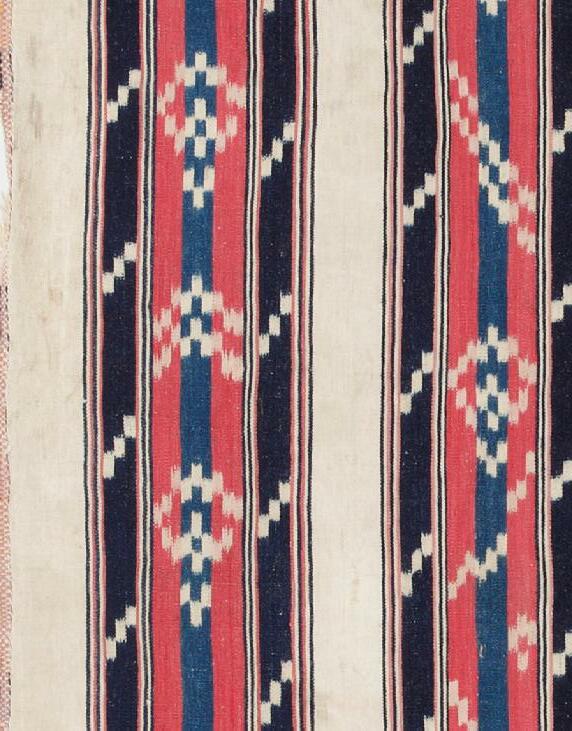Roots and Routes of a Textile Technique
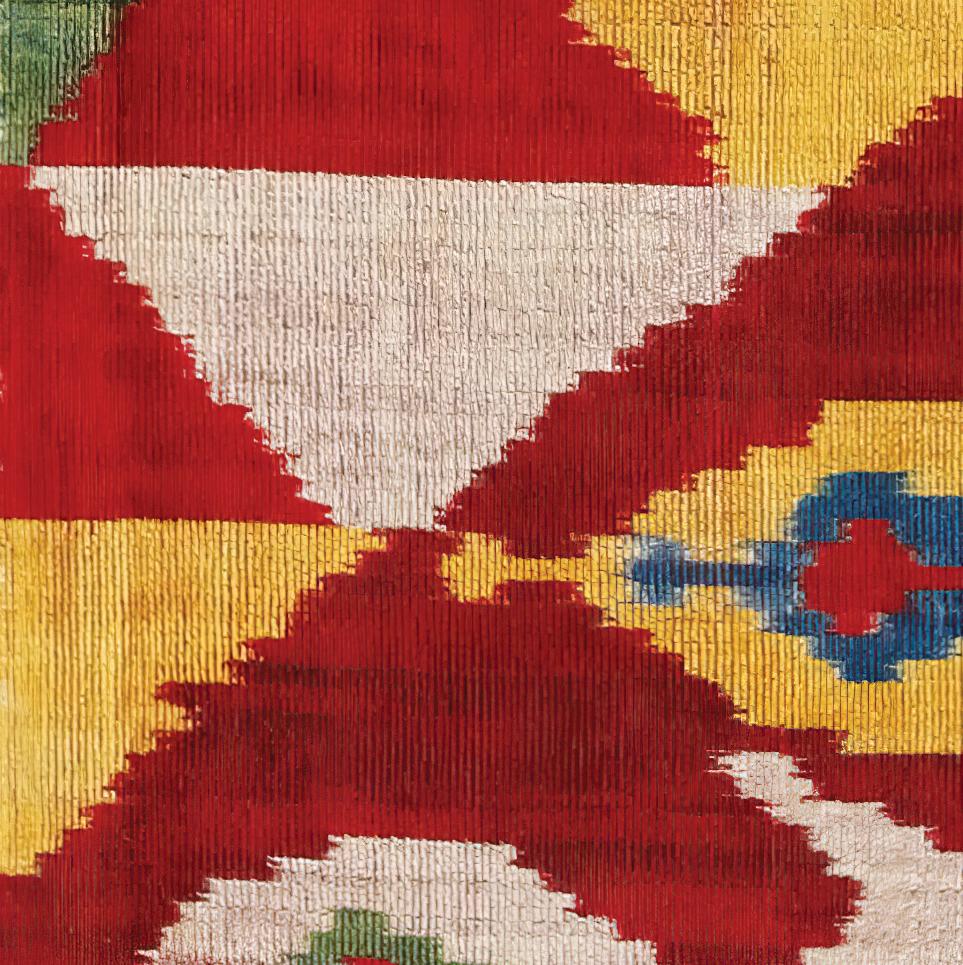
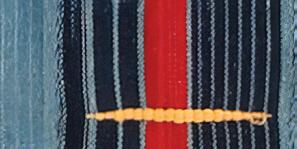



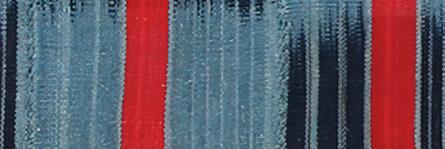

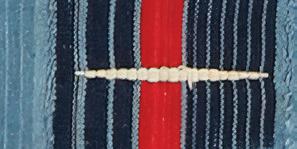
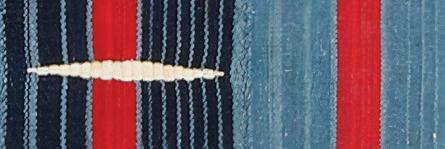
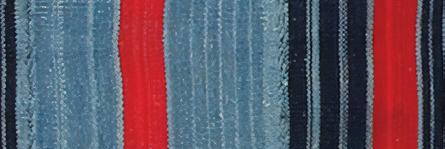
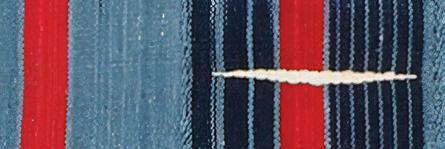
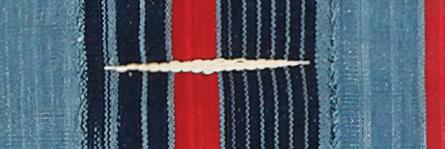






















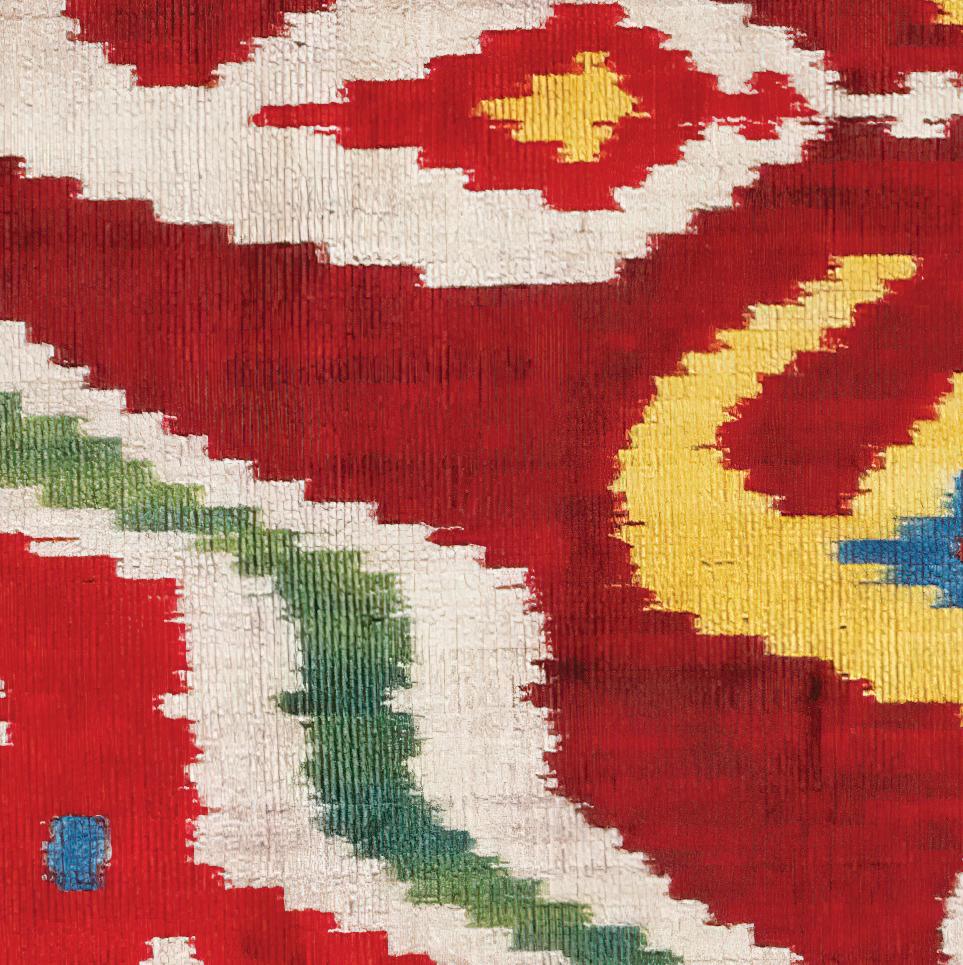














































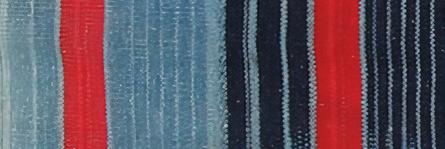
































 The David Paly Collection
The David Paly Collection











 by Lee Talbot
by Lee Talbot















Japan maintains one of the world’s richest and most diverse ikat traditions. Colorful ikat patterning appears in a variety of forms and contexts, from the resplendent costumes worn by courtiers and actors to sturdy work clothes for farmers and fishermen. Japanese artisans have developed a remarkable range of unique solutions for dyeing yarns before weaving, including techniques that do not involve binding but create visually similar results. Textiles made by these processes are broadly categorized as kasuri 1 Kasuri dyers and weavers have achieved global recognition for their meticulous planning and execution, ongoing technical experimentation, and mastery of materials including cotton, silk, and various bast fibers. Technical and stylistic innovations have helped to maintain kasuri’s relevance and economic viability over several centuries, and time-consuming methods of hand weaving and dyeing continue alongside mechanized factory production in present-day Japan.
The earliest examples of ikat in Japan have survived in the repositories of two great Buddhist temples: Horyuji, built during the Asuka period (552–645), and Todaiji, dating to the Nara period (645–794). Each temple collection contains colorfully patterned warp-ikat silk fragments that likely formed part of banners used in Buddhist rituals during the 7th and 8th centuries (Fig.3). Coinciding with China’s cosmopolitan Tang dynasty (618–907), this era witnessed the heyday of the so-called Silk Road, and luxury goods produced across Eurasia reached Japan via multiple trade routes. The warp-ikat fragments in the Horyuji and Todaiji collections traditionally have been referred to as kanto-kin (“Canton polychrome”), and scientific analyses of their fibers and dyes further suggest production in southern China.2
A sophisticated local tradition of yarn-resist silk textiles emerged in Kyoto, which became Japan’s capital during the Heian period (794–1185). Heian aristocrats adopted many aspects of Tang Chinese court costume, including ceremonial sashes called hirao , which remain in use in certain court, ecclesiastical, and dance contexts. Using a technique called karagumi (“Chinese braiding”), a type of paired oblique twill interlacing, hirao are made of heavy silk cords that have been resist













(“alternate attendance”) system, introduced in 1635, required daimyo (feudal lords) and their retainers to live alternately one year in their domains and one year in Edo, the capital. The daimyo typically brought their own artisans with them to Edo, where they maintained lavish lifestyles and socialized with their peers from other regions, so this policy served to introduce makers as well as consumers to new styles and techniques and to disseminate them across Japan. The political stability and economic prosperity of the Edo period (1603–1867) stimulated interregional trade, which further facilitated the spread of fashions and skills. Burgeoning market demand fueled local production and, although Japan seems to have manufactured few kasuri at the beginning of the 18th century, by the end of the century kasuri weaving was well established in many regions.
Although weavers attached to daimyo households probably created some kasuri fabrics, women working domestically in rural areas became the main producers. Primarily engaged in agriculture, these women and their families supplemented their incomes by cultivating fibers in summer and weaving them into saleable cloth during the winter. Textile production and family incomes expanded with the introduction of cotton, which became increasingly widespread through the 18th century. Cotton was not only warmer but also easier and faster to process and thus less expensive than the hemp and ramie fibers used previously. Cotton cultivation and weaving became integral to rural economies in many regions, and cotton clothing dyed in indigo with reserved white kasuri patterns became the archetypal costume of rural Japan (JP50).8 Fabrics intricately dyed in






 Fig.6
Fig.6
In Central Asia, as in West Asia, the warp yarns are resist dyed and therefore carry the design. The main weave structure favored by the weavers was a warp-faced plain weave with a silk warp and cotton weft. Toward the end of the 19th century, weavers began to experiment with new weave structures; satin weave and velvet were introduced. Weavers began to use red silk yarns for the weft. For those ikats, they chose a warppredominant, plain-weave structure for the fabric (WCA03). Although designs on Central Asian ikat fabrics are more freeflowing and larger than Syrian and some Iranian examples, they retain their verticality, due to the warp-faced weaves used for their production.

Central Asian ikat fabrics were turned into furnishing fabrics, mostly hangings and covers, or into garments. The hangings or covers were made out of multiple lengths of the same loomwidth fabric, which was cut and attached side by side to create a textile with desirable width. They covered alcoves or were draped over the bedding during the day.15 When both hangings and garments wore out, they were cut into smaller pieces and turned into other objects, such as bread covers, bags, cradle covers, and linings or facings for other garments or hangings.






Three articles of clothing—a knee- or ankle-length outer robe, a T-shaped, loose-cut, unlined tunic-dress, and trousers— have been the basic costume for men, women, and children in Central Asia for millennia. Outer robes were tailored the same way for men and women (WCA01). The robes had a straight or slightly flaring silhouette.16
Aside from the generic robe, often referred to as a chapan or khalat, worn by men and women, there was a specific women’s

robe called a munisak. The munisak was worn indoors. It had a wide neck opening and a full skirt that was gathered in small pleats under the arms, creating a more fitted waist (WCA01). Underneath the luxurious ikat robes, women wore a number of T-shaped dresses of ikat fabric reaching to the ankles (WCA23). These tunic-style dresses were referred to as kurta in Tajik and kuylak in Uzbek. Under the T-shaped dress, women wore bulky trousers that reached to the ankle (WCA09). The cotton fabric formed the top part of the trousers where it was well hidden under the dress. The more precious and colorful ikat fabric was used for the legs, which were more visible.
In any culture within West and Central Asia that produced them, ikat fabrics were considered precious and prestigious. They were expensive due to the high cost of silk and to a sophisticated production sequence that required a large and highly skilled workforce. Other factors affected the








importance placed on textiles, especially luxury textiles such as ikat. Centuries of political turmoil and instability in all these regions created an environment that forced people to accumulate and invest their wealth in portable items such as textiles and jewelry. They were light, made with expensive materials, required costly labor to produce, and did not lose their value. Furthermore, we can posit that wearing one’s wealth was a lingering vestige of a nomadic past among longsettled societies of West and Central Asia. Today, the visual power of these fabrics has spurred a 21st-century revival of ikat and serves as inspiration for many leading artists around the world. While their visual appeal, artistic attraction, or technical achievement is not denied, our understanding of the ikat textiles is impoverished if we do not also recognize their importance within the history of the cultures that produce them.













Ikat velvet required more yarn, and designers had to adjust their traditional designs considerably to achieve the desired effects when yarns were woven into fabric. As a result, velvet fabric was more expensive for workshops to finance and was woven less frequently than plain-weave ikats. It was produced during a short period from 1850 until around 1910, and only in Bukhara. Silk-ikat velvets were used most often for dowry garments such as this munisak . Once they wore out, they were recycled into other functional textiles.
The distinctive look of the munisak , an outer robe a woman would wear in her house, was given during the tailoring process by making a few adjustments to the basic construction of a type of robe worn both by men and women. A munisak has a wide neck opening and a full skirt that is gathered in small pleats under the arms, creating a more fitted waist. The sleeves are often very long and narrow towards the cuffs. If the family could afford it, the munisak was made with ikat fabric, especially velvet ikat. The garment had a special place in a woman’s life since it was an item in her trousseau. Depending on the wealth of the family, the bride had one or more munisak . The bride wore it during the first day in her husband’s home, and afterwards at festive occasions such as weddings as well as more somber events like funerals. Finally, a woman's munisak was placed on top of the coffin during her funeral.










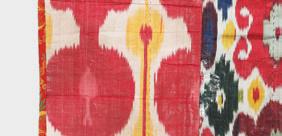





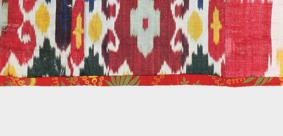
























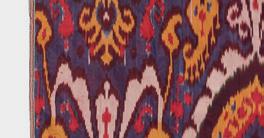























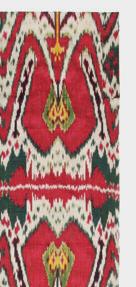

























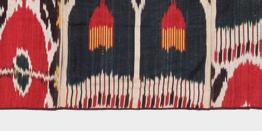











































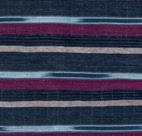














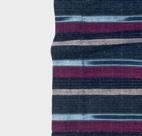




















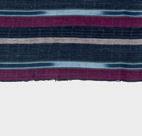























AF20 Mixed ikat pattern man’s wrapper cloth, zaza, Baule people, Cote d’Ivoire, circa 1970s. Mill-spun cotton. Made up of 16 strips. 92 in x 68 in



















Large blocks made up from two different warp-ikat patterns divide the cloth into 16 rectangles. Cloths like this were worn toga fashion by men of the Baule and other ethnic groups in central and southern Cote d’Ivoire, while smaller versions served as wrap-around skirts for women.





MA53 Toraja ceremonial textile or women’s skirt material, Palu or Kalumpang, Sulawesi, Indonesia, 19th century. Cotton, warp ikat. 60 in x 70 in












Two panels of cloth are decorated with warp stripes and rows of warp-ikat patterning. Similar textiles are used as a shroud by the Kalumpung. Women of Palu tailored warp-ikat-decorated textiles from Kalumpang into skirts. Warp-ikat production in Palu ceased some centuries ago. The main bands are filled with warp-ikat designs of interlocking hooks, stepped squares, and narrow triangular shapes. A distinctive detail is found in the dark outlines around the exterior of the main designs.




































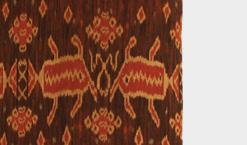






















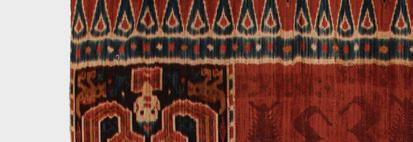


































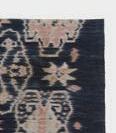






































































AM45 Poncho, northern Bolivia, early 19th century. Warp watay on merino wool, alpaca fringe. 79 in x 54 in







This poncho is an exceptional example of those woven in several regions in Bolivia during the 19th century. The composition features medium-width white monochrome stripes alternating with groups of narrower stripes with watay patterns in a continuous repeating pattern across the width of the garment. The use of natural white merino wool provides a contrast with the more vivid pink, light-blue, and dark-blue narrow stripes, while corresponding with the small watay patterns formed by small rectangular blocks pulled into diagonal and diamond shapes. This poncho is somewhat unusual in that, instead of being confined to a single stripe, the patterns are formed across multiple stripes of different colors. The alpaca fringe was made separately and attached to the finished garment, containing the same range of colors as in the main body of the poncho with the addition of a bright shade of yellow.

